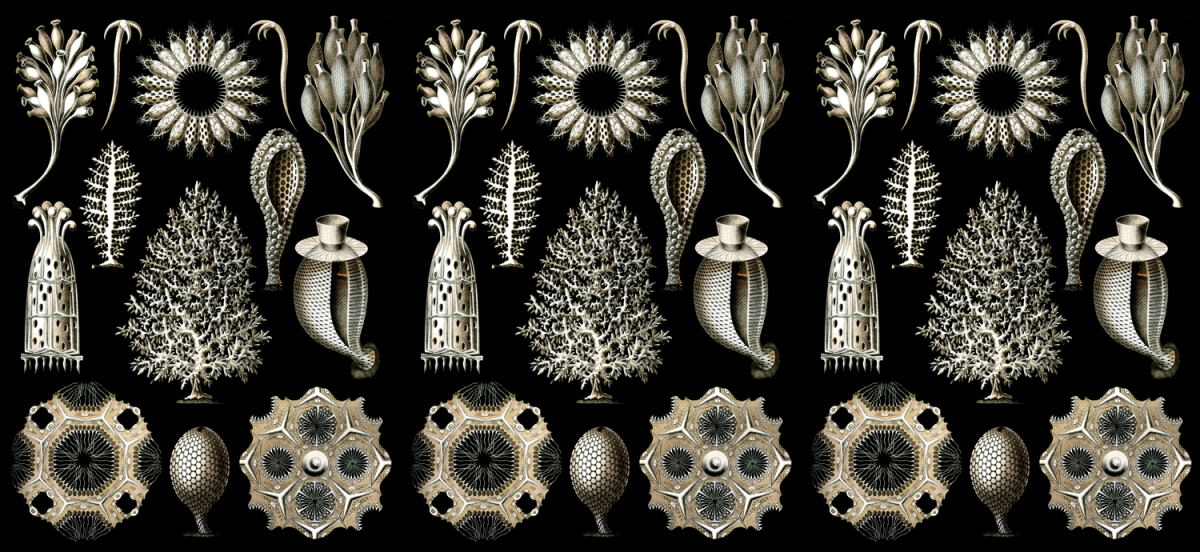Chapter contents:
Porifera
–– 1. Archaeocyatha
–– 2. Stromatoporoidea
–– 3. Demospongiae
–– 4. Hexactinellida
–– 5. Calcarea ←
–– 6. Homoscleromorpha
3D models of Calcarea can be found here!
Above Image: Kunstformen der Natur (1904), plate 5: Calcispongiae by Ernst Haekel (Public Domain).
Class Calcarea Snapshot
- Examples: calcareous sponges
- Ecology: marine
- Key features of group: ascon, sycon and leucon body forms, Mg-calcite unfused, monoaxon, diactine, triactine, tetracline, or polyactine spicules
- Diversity: ~786 living sp.
- Fossil record: Cambrian to Recent
Overview
Class Calcarea includes sponges that are small in size and less colorful than other sponge classes. Calcareous sponges have spicules made of magnesium calcite (MgCO3), or may lack spicules altogether. The most common spicule shape are triactines with three pointed spires, which are shown in the figure below from Van Soest et al., 2012. They are, by far, the sponge class with the highest diversity of spicule and body forms. While the vast majority of ancient Calcarea inhabited shallow water throughout their fossil record, modern species have been found across all depths. Some recent Antarctic expeditions have discovered a "sponge kingdom," where at least five Calcarea sponge species have been found at depths in excess of 4400 m.
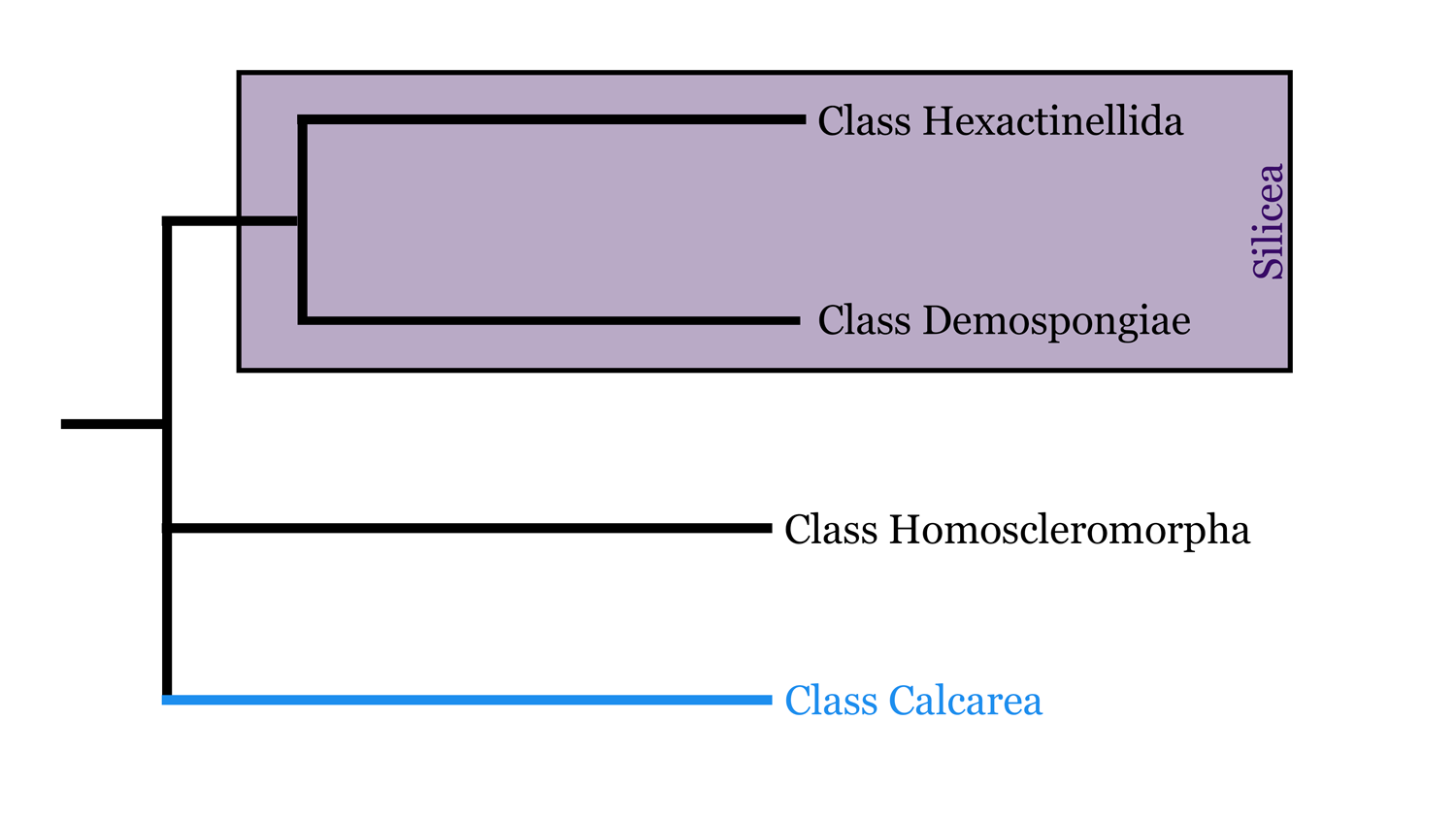
Highly simplified overview of Porifera phylogeny based in part on the hypothesis of relationships presented by Botting and Muir (2018). Image by Jaleigh Q. Pier, licensed under a Creative Commons Attribution-ShareAlike 4.0 International License.

Sponge body plans modified from original image by 'Philcha' (Wikimedia Commons; Creative Commons Attribution-Share Alike 3.0 Public Domain Dedication). Spicule image by Jaleigh Q. Pier is licensed under a Creative Commons Attribution-ShareAlike 4.0 International License.
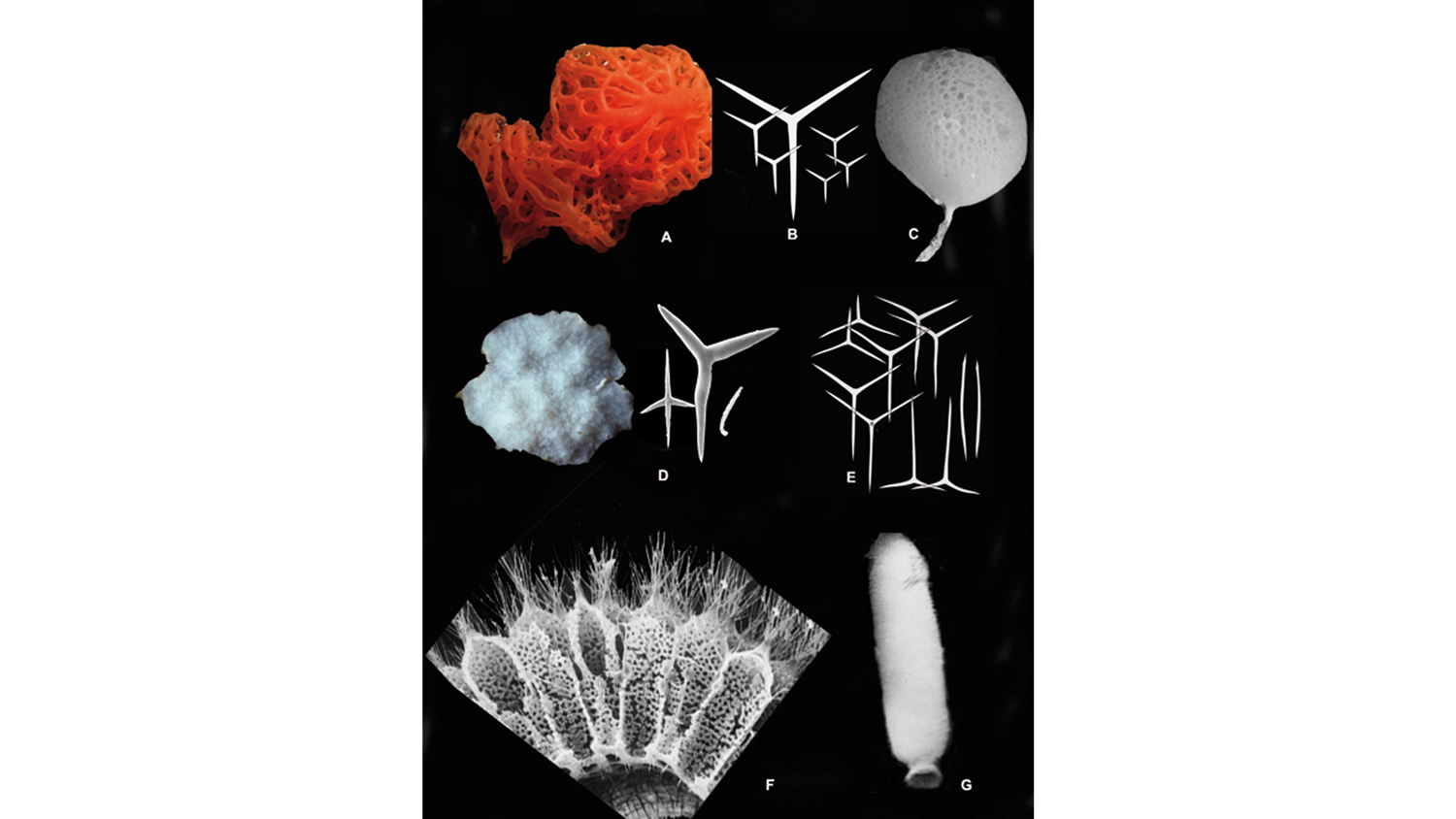
Calcarea diversity. Original caption: "A. Clathrina rubra (Calcinea, Clathrinida), NW Mediterranean Sea (photo courtesy Jean Vacelet); B. Calcinean spicules: equiangular and equiradiate triactines (photo courtesy Jean Vacelet); C. Guancha lacunosa (Calcinea, Clathrinida), NW Mediterranean Sea; D. Petrobiona massiliana (Calcaronea, Lithonida), two specimens from caves, NW Mediterranean Sea. Spicule complement of P. massiliana: from left to right pugiole, sagittal triactines, microdiactine (photos courtesy Jean Vacelet); E. Calcaronean spicules: sagittal (inequiangular) triactines and diactines; F. Syconoid aquiferous system from Sycon ciliatum (SEM photo, courtesy Louis De Vos, ULB); G. Sycon ciliatum (Calcaronea, Leucosolenida), specimen about 10 cm, from the English Channel." By (Van Soest et al., 2012) (Wikimedia Commons; Creative Commons Attribution-Share Alike 3.0 Public Domain Dedication).
Calcareous sponges have a poor fossil record because the calcitic spicules do not preserve well, or may be lost when sediments are altered. That said, they have the most diversity of any other sponge class making classification difficult. There may be more fossil Calcarea that haven't yet been identified.
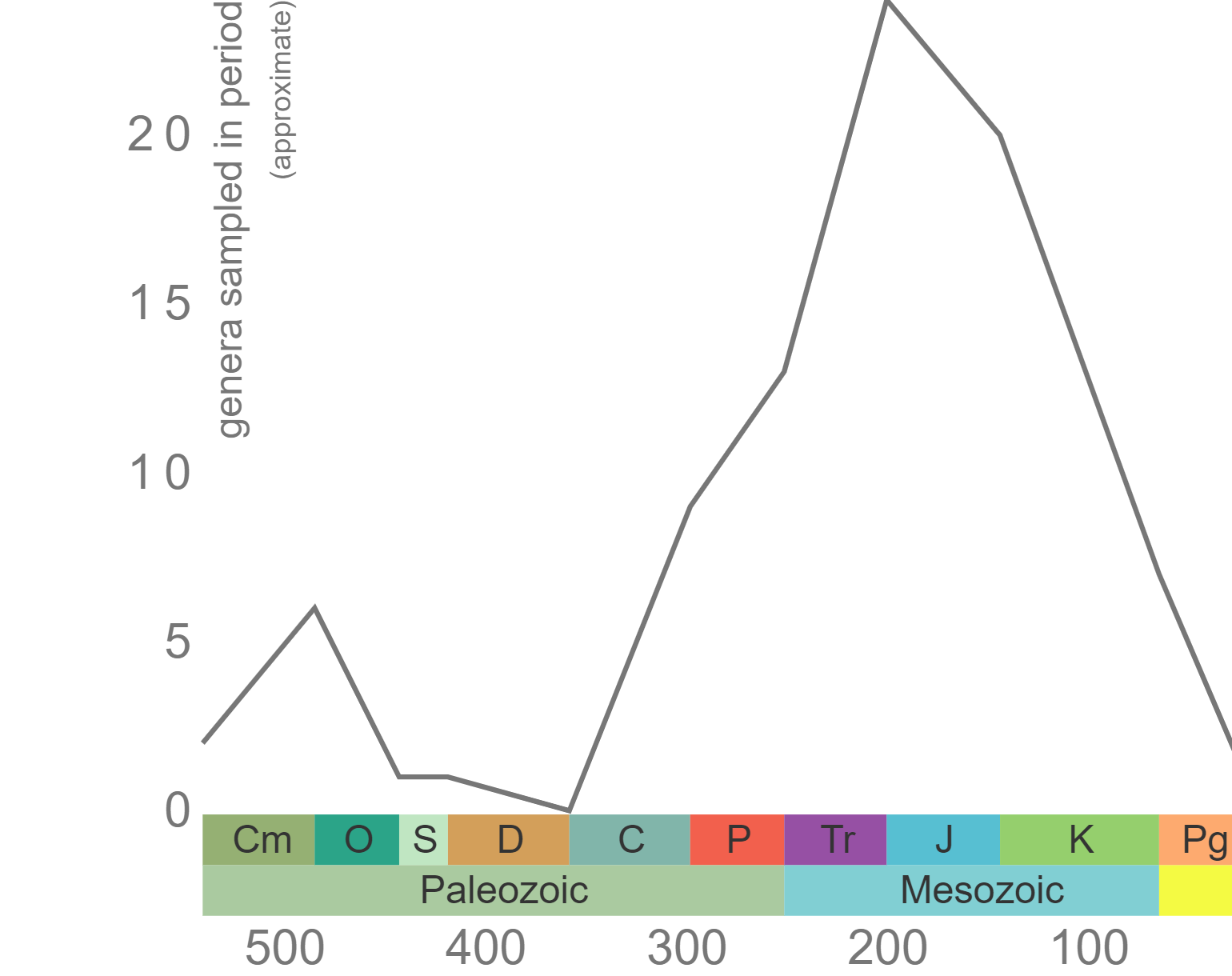
Phanerozoic genus-level diversity of Calcarea (graph generated using the Paleobiology Database Navigator).
Members of the order Heteractinida (class Calcarea) are characterized by a calcareous "octactine" spicule type, which looks like a snowflake with six branches and two additional branches positioned at right angles in a second growing plane. This order is only known from Paleozoic fossils dating from the Early Cambrian to the end-Permian mass extinction (Picket, 2008). Look at the spicules of a Heteractinid sponge below up close!
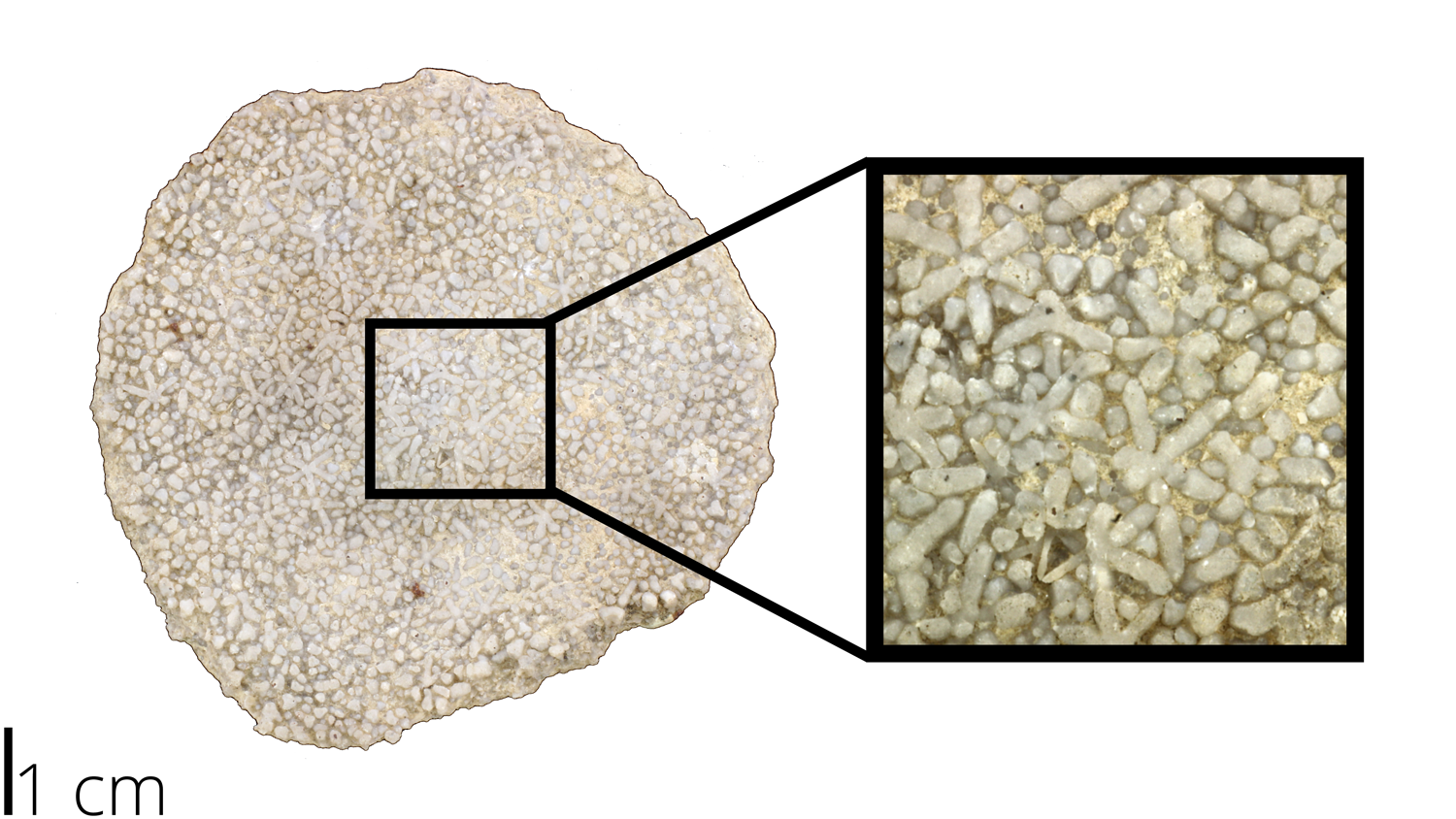
Fossil specimen of the calcareous sponge Astraeospongium meniscus from the Silurian Niagara Group of Perry County, Tennessee (PRI 76744). Specimen is from the collections of the Paleontological Research Institution, Ithaca, New York. Maximum diameter of specimen is approximately 8 cm.
Living Calcarea:
A unique characteristic discovered in living members of class Calcarea is vivipary (Hooper and van Soest, 2002). Being viviparous means they brood their young inside their body wall instead of broadcasting both eggs and sperm into the vast ocean to then form larvae and settle on their own.
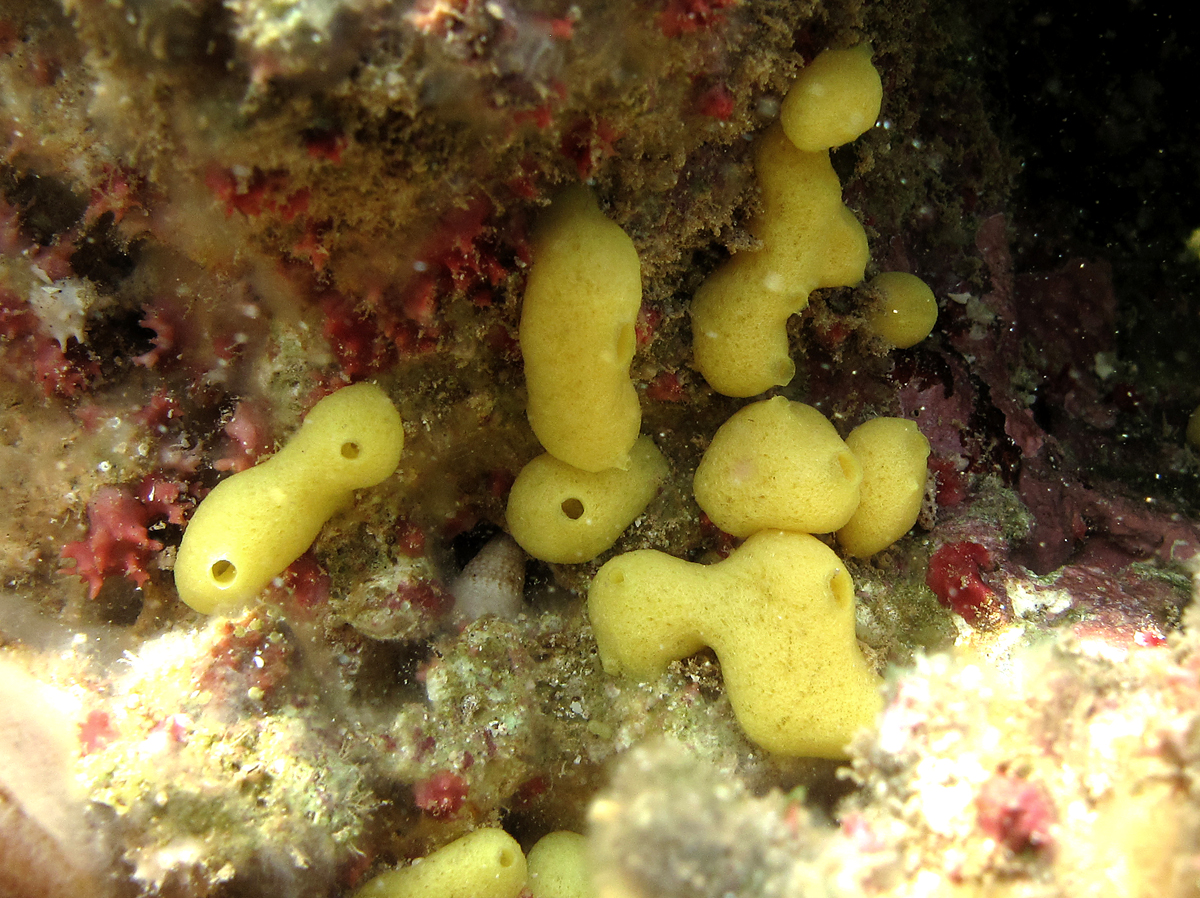
Leucetta chagonensis. Image by: Philippe Bourjon (Wikimedia Commons; Creative Commons Attribution-Share Alike 3.0 Public Domain Dedication).
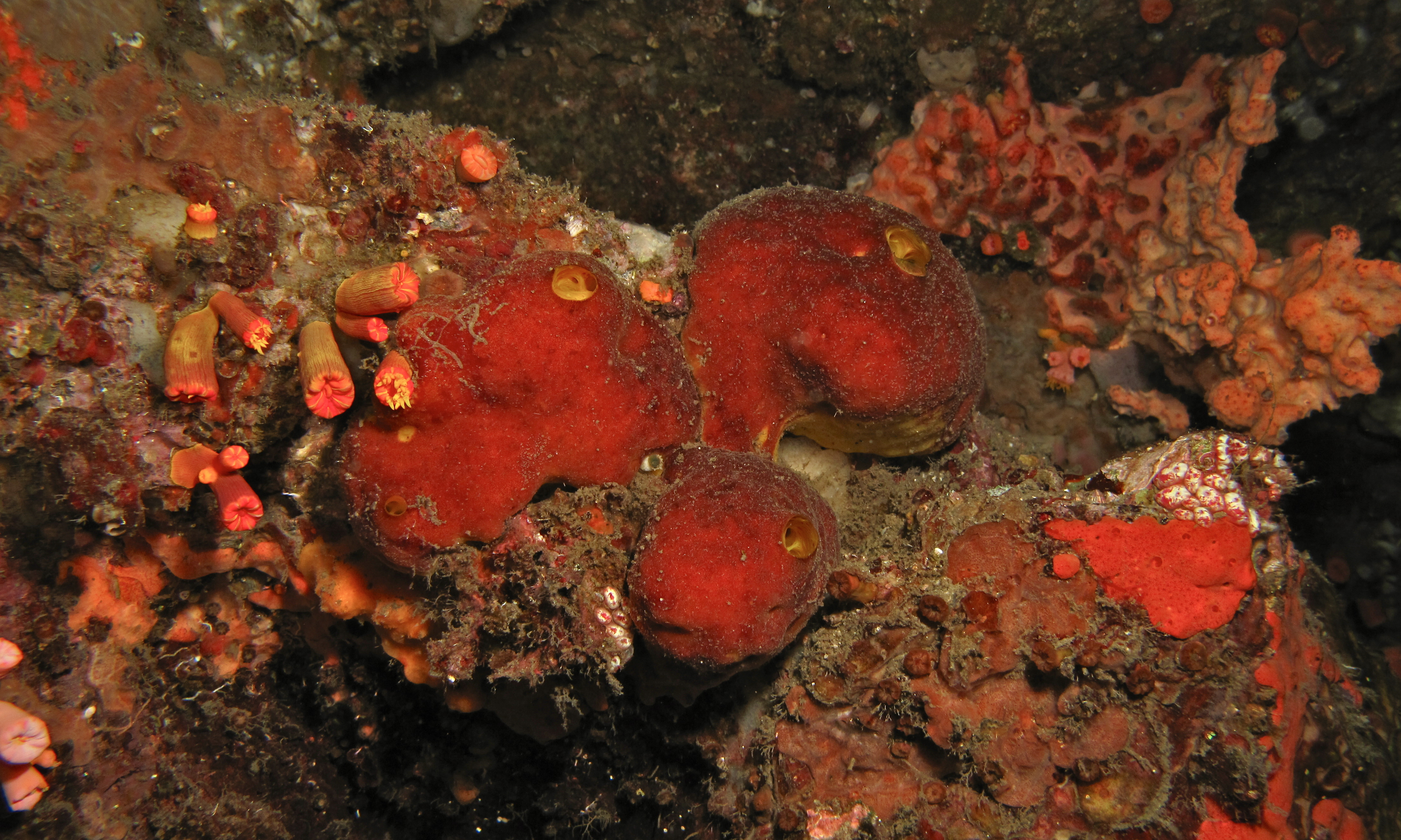
Leucettidae from Sulawesi, Indonesia. Image by: Bernard DUPONT (Wikimedia Commons; Creative Commons Attribution-Share Alike 2.0 License)
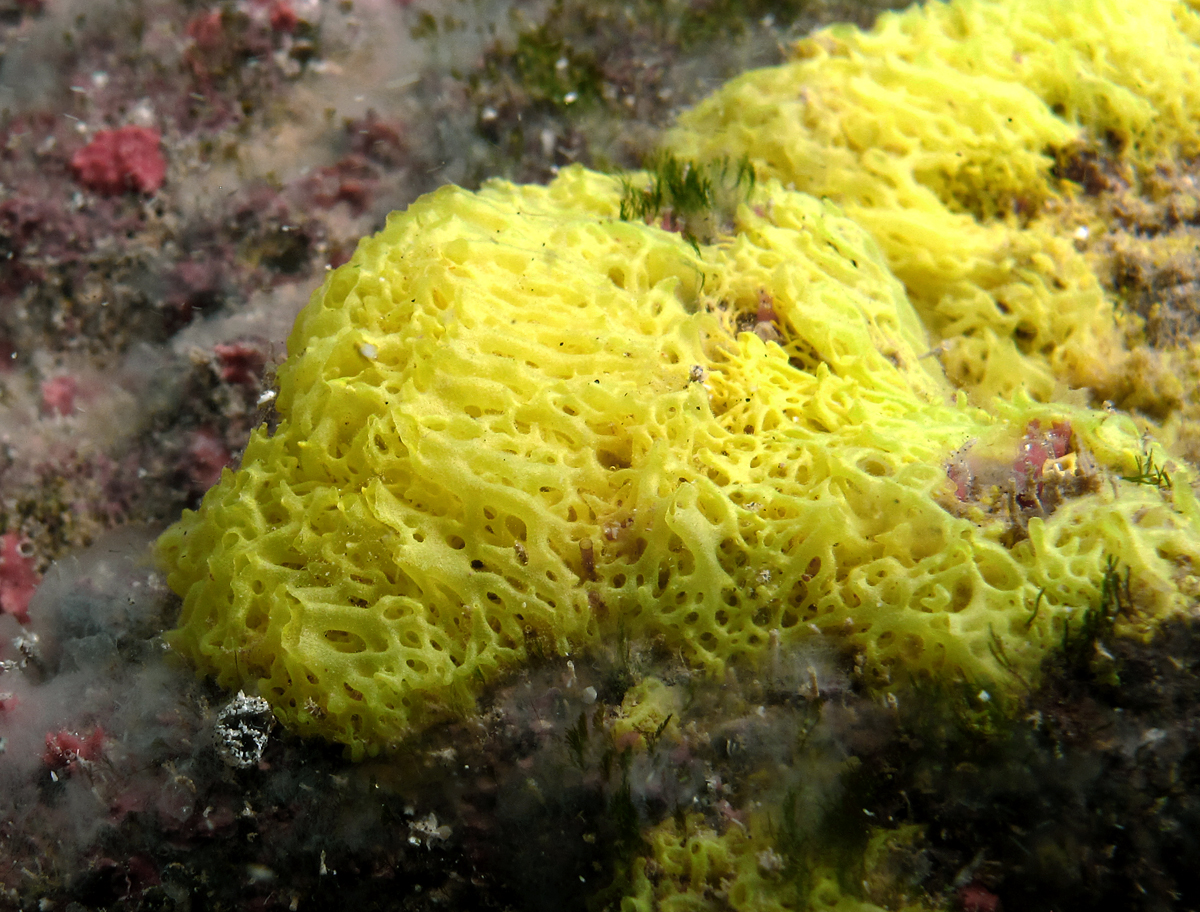
Clathrina darwinii. Image by: Philippe Bourjon (Wikimedia Commons; Creative Commons Attribution-Share Alike 3.0 Public Domain Dedication).
Fossil Calcarea:
Fossil specimen of the calcareous sponge Raphidonema farringdonense from the Cretaceous of Berkshire, England (PRI 45561). Specimen is from the research collections of the Paleontological Research Institution, Ithaca, New York. Maximum diameter of specimen is approximately 8 cm.
Fossil specimen of the sponge Astraeospongium meniscus from the Silurian Niagara Group of Perry County, Tennessee (PRI 76744). Specimen is from the collections of the Paleontological Research Institution, Ithaca, New York. Maximum diameter of specimen is approximately 8 cm.
References and further reading:
Boardman, R.S., Cheetham, A.H., and Rowell, A.J. 1987. Fossil Invertebrates. Blackwell Scientific Publications. 713 pp.
Botting, J.P, and Muir, L.A. 2018. Early sponge evolution: A review and phylogenetic framework. Palaeoworld: 27, pp. 1-29.
Brusca, R.C., and G.J. Brusca. 2002. Invertebrates Second Edition. Sinauer Associates Inc. Publishers, Sunderland MA. 936 pp.
Hooper, J.N.A. & van Soest, R.W.M. (Eds.) 2002. Systema Porifera: a guide to the classification of Sponges. Kluwer Academic/Plenum Publishers: New York, NY (USA). ISBN 0-306-47260-0. xix, 1-1101, 1103-1706 (2 volumes) pp.
Pickett J., 2002. Order Heteractinida Hinde, 1887. In: Hooper J.N.A., Van Soest R.W.M., Willenz P. (eds) Systema Porifera. Springer, Boston, MA.
Rapp, H.T., Janussen, D., and Tendal, O.S. 2011. Clacareous sponges from abyssal and bathyal depths in the Weddell Sea, Antarctica. Deep-Sea Research II: 58, 58-67.
Van Soest, R.W.M., et al. 2012. Global Diversity of Sponges (Porifera). PLoS ONE: 7(4), pp. 1-23.
Ziegler, B. and S. Rietschel. 1970. Phylogenetic relationships of fossil calcisponges. Symp. Zool. Zoc. Lond. 25: 23-40.
Usage

Unless otherwise indicated, the written and visual content on this page is licensed under a Creative Commons Attribution-NonCommercial-ShareAlike 4.0 International License. This page was written by Jaleigh Q. Pier. See captions of individual images for attributions. See original source material for licenses associated with video and/or 3D model content.



